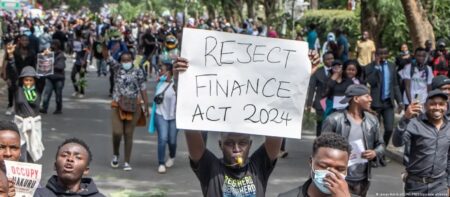- In Kenya, a concerning 75.4% of women journalists have reported experiencing online harassment.
- Several sub-Saharan African countries have enacted national frameworks, such as the Cybercrimes Act to counter the menace.
- However, while legal frameworks provide avenues for recourse, more proactive measures are needed to combat online violence effectively.
In an era dominated by digital platforms and social media, the rise of disinformation and online harassment poses significant challenges for journalists across the globe.
According to Clarice Wambua, a lawyer at leading corporate and commercial law firm Cliffe Dekker Hofmeyr (CDH) Kenya, this is especially true for women journalists in sub-Saharan Africa, who provide a vital service to society and must not be bullied into silence.
She notes that the pursuit of truth is of utmost importance, but women journalists in Africa often encounter difficult situations. Despite their valuable contributions to the field, they often face different types of harassment, which hinder their ability to report freely and without fear.
“The voices of female journalists in Africa are not just important, they’re indispensable,” says Clarice. “They bring a unique perspective, one rooted in the experiences of African women.”
In light of this growing concern, a team of CDH Kenya lawyers led by Clarice has on a pro bono basis, actively supported Media Defence, a non-profit organisation that provides legal help to journalists, citizen journalists, and independent media across the world.
CDH contributed to the development of a fact sheet entitled “Disinformation and Online Harassment against Women Journalists in Sub-Saharan Africa“, to be utilised in the Media Defence resource hub for lawyers litigating digital rights and freedom of expression cases.
The factsheet was developed against the face of mounting evidence that online violence against women journalists is increasingly rampant. A recent UNESCO study covering 15 countries, including Ghana and Nigeria, highlights that 73 per cent of women journalists have encountered online violence during their work.
Why Kenyan women journalists should be worried
Read also: Kenya partners with media to market tourism offerings
Similarly, in Kenya, a concerning 75.4 per cent of women journalists reported experiencing online harassment due to factors such as the news content they cover, their ethnicity, and their gender.
These statistics underscore the urgent need to address the toxic environment created by disinformation and online harassment in the digital sphere. Disinformation and online harassment not only cause psychological and emotional distress but also undermine the freedom of expression and the public’s right to receive information.
Moreover, they jeopardise trust in journalism and deprive society of diverse voices and perspectives. The normalisation of online harassment for many women journalists is deeply concerning.
Extreme views on digital platforms have empowered misogynistic individuals to disseminate hateful content, using the pretext of freedom of expression. This sustains a damaging cycle of intimidation, threats, and harassment, making it difficult for women journalists to perform their crucial work in a safe environment.
There exist legal protective mechanisms for women journalists. At a continental level, the African Commission on Human and Peoples’ Rights has adopted resolutions to safeguard women against digital violence, calling for legislative measures and gender-sensitive training to combat online harassment.
Furthermore, several sub-Saharan African countries have enacted national frameworks, such as the Cybercrimes Act in Nigeria and the Protection from Harassment Act in South Africa, to address disinformation tactics and prevent online harassment of journalists.

However, while legal frameworks provide avenues for recourse, more proactive measures are needed to combat online violence effectively. Women journalists should be able to leverage reporting mechanisms provided by social media platforms, engage legal practitioners to pursue legal action against perpetrators, and seek support from regional or local bodies dedicated to media safety.
“By raising awareness, advocating for legislative reforms, and fostering a culture of digital safety and respect, we can create a more inclusive and empowering environment for women journalists to thrive and continue their vital contributions to our society,” added Clarice.











